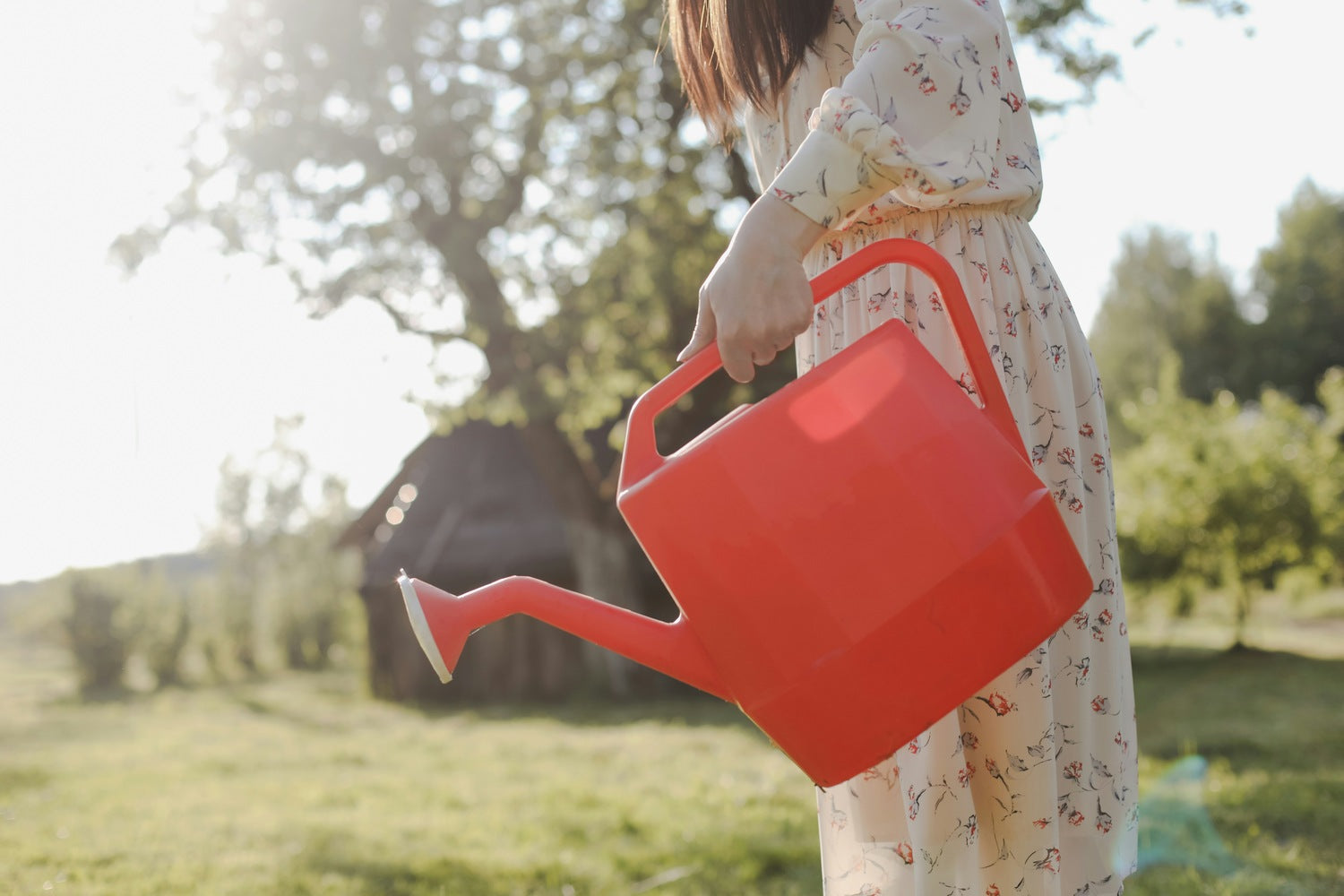Improper watering often leads to rot, stunted growth, or poor bulb development. Our watering techniques can help you achieve optimal garlic growth from planting through harvest. Discover the best watering schedule for garlic plants, ensuring consistent care through each growth stage, and maximize garlic production.
Best Watering Schedule for Garlic Plants
The best watering schedule for garlic plants changes throughout its growth cycle, requiring weekly watering during the planting and early spring periods, followed by increased amounts during the critical garlic bulbing stage in spring and summer. As garlic approaches maturity, watering should be gradually reduced and eventually stopped before harvest.

While relatively low-maintenance, achieving a robust harvest of plump, flavorful bulbs hinges significantly on one key factor: proper watering. We're going to help you establish a watering schedule for your garlic plants to achieve a successful and satisfying yield.
Ideal Watering Schedule Per Season and Growth Stage of Garlic
Garlic plants require varying amounts of water during their growth stages. Matching your watering to each phase will help you grow healthy bulbs and prevent common problems, like rot or small yields.
|
Growth Stage |
Frequency |
Amount |
Notes |
|
Planting |
Weekly as needed |
1 inch per week |
Stop in dormancy, avoid sogginess |
|
Bulbing |
Weekly |
1-2 inches |
Adjust for soil type |
|
Maturation |
Reduce, then stop |
Less than an inch |
Stop watering before harvest |
1. Early Spring: Planting to Leaf Development
This initial phase, from planting the cloves in fall or early spring until the weather begins to warm significantly, focuses on establishing a strong root system and healthy foliage. This is ideal for most types of garlic, including hardneck varieties like Chesnok Red.
- Water thoroughly after planting: Immediately after planting the garlic cloves, water the soil deeply. This helps settle the soil around the cloves and initiates root growth.
- Maintain consistent moisture: Aim for consistently moist soil, similar to the feel of a wrung-out sponge. The top inch or two of soil should retain some moisture. This consistent moisture supports the early leaf growth of both softneck and hardneck varieties.
- Water deeply once or twice a week: Depending on your local climate and soil type, you'll likely need to water deeply once or twice a week. Let the water penetrate several inches into the soil to encourage deep root growth. Avoid frequent, shallow watering, which can lead to weak roots.
2. Spring to Early Summer: Bulbing Stage
As the weather warms and daylight hours increase, garlic shifts its energy towards bulb development. Adequate and consistent moisture helps bulbs swell and reach their full potential, influencing the size of bulbs in varieties like the Russian Giant.

- Increase watering frequency slightly: As the bulbs begin to form and enlarge, you may need to increase your watering frequency. Monitor the soil moisture regularly.
- Keep the top inch or two consistently moist: The goal is to keep the top couple of inches of soil consistently moist yet not saturated. Fluctuations in soil moisture during garlic bulbing can stress the plants and impact bulb size and quality.
- Water deeply every 3-5 days: Depending on weather conditions and soil type, aim to water deeply every 3-5 days. Water thoroughly so that the moisture reaches the root zone, supporting the significant bulb growth during this stage.
3. Late Spring to Early Summer: Maturation
As the garlic approaches maturity, typically indicated by the yellowing and eventual die-back of the lower leaves, the watering requirements change significantly. This stage promotes proper bulb formation and curing for most garlic varieties, including the Organic Krasnador Red.
- Gradually reduce watering: Once you observe the lower leaves starting to turn yellow, begin to gradually reduce your watering. This signals that the bulbs are nearing their full size and are beginning to cure in the ground.
- Stop watering about 2-4 weeks before harvest: Cease watering completely when about half to two-thirds of the leaves have yellowed and fallen over.
- Avoid wetting foliage: Avoid overhead watering as the plant focuses on bulb maturation and reaches senescence. Wet foliage in the late season can encourage fungal diseases that can damage the bulbs. Focus watering at the base during the initial reduction phase.
Factors Influencing the Watering Frequency of Garlic Plants
Garlic grows best when you pay close attention to the conditions around it.
- Climate: Temperature and rainfall directly impact soil moisture levels, requiring adjustments to watering frequency based on how quickly the soil dries out.
- Soil type: The soil's ability to retain water dictates how often watering is needed, with sandy soils requiring more frequent watering than clay soils.
- Growth stage: Garlic demands consistent moisture during early growth and bulbing, but requires reduced watering as it matures.
- Mulch: Mulch helps retain moisture, and water should be applied at the base, enabling the surface to dry slightly between waterings.
Garlic Plant Watering Practices and Tips
Do you want to achieve efficient moisture delivery and promote healthy garlic growth in your garden? Here are some watering techniques to get you through the planting season.

- Water garlic thoroughly immediately after planting.
- Maintain evenly moist soil during the growing season.
- Aim for about one inch of water weekly, adjusting for rainfall and soil type.
- Cease watering during rainy winters. Resume regular watering with spring growth.
- Stop watering approximately two weeks before harvest to allow bulbs to dry for storage.
- Check soil moisture with tools or a finger (one inch deep).
Related Questions
What Is the Best Irrigation System for Garlic?
Drip irrigation systems are ideal for garlic cultivation as they deliver water directly to the root zone while keeping foliage dry, which helps prevent fungal diseases. For small gardens, soaker hoses offer a similar benefit at a lower cost while still providing the consistent, deep watering that garlic plants need for proper bulb development.
When Is the Best Time of the Day to Water Garlic Plants?
Early morning to midday is the optimal time to water garlic plants, allowing foliage to dry completely before evening and reducing the risk of fungal diseases. This timing also minimizes water loss from evaporation while giving plants adequate moisture to withstand the day's heat.
What Are the Signs of Overwatering and Underwatering Garlic Plants?
Overwatered garlic typically shows yellowing leaves and soft stems, and may develop root rot with an unpleasant smell, while bulbs become more susceptible to fungal infections. Meanwhile, underwatered garlic plants display thin, curling leaves, stunted growth, and premature yellowing of leaf tips, with significantly smaller and less flavorful bulbs.
Conclusion
With the right watering schedule for garlic plants, you'll be rewarded with larger, more flavorful bulbs. Start implementing these watering practices with your next garlic crop and enjoy the satisfaction of harvesting perfectly formed, homegrown garlic instead of buying your garlic in the market.


